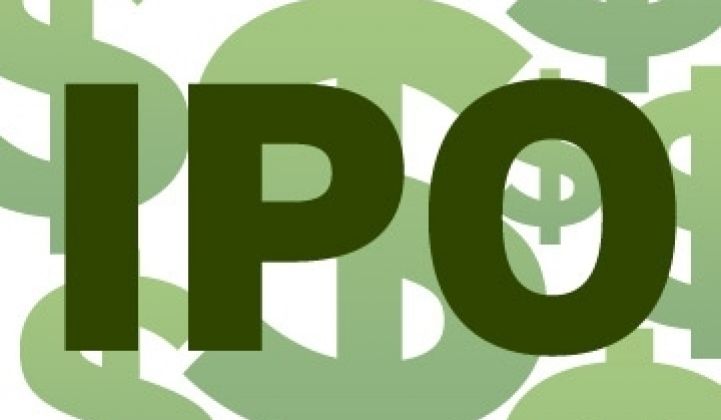We recently named SolarEdge as a company that could potentially make it through the IPO window. (Here's our recent forecast of IPO hopefuls, which has proven to be pretty accurate.)
Just reported: Israel-headquartered solar balance-of-system vendor and maker of solar optimizers SolarEdge is looking to raise more than $100 million in an initial public offering next year, according to Bloomberg.
SolarEdge is "in talks with financial institutions for a New York listing next summer," according to anonymous sources.
Bloomberg quotes Ronen Faier, CFO of SolarEdge, as saying:
- “We have all intentions to become one of the largest players in the market, and doing that in this market requires a lot of money,” he said, adding, “It’s very hard to grow a large company on private money.”
- Annual sales are “well north of $100 million."
- “The U.S. market is one of the fastest-growing markets in the world," a trend he said is “expected to continue" until U.S. tax breaks end.
The company website claims that the startup has shipped more than 2 million power optimizers to more than 45 countries
SolarEdge has spoken of IPO plans since 2011. One of its largest customers is SolarCity, and rumors have occasionally surfaced of an acquisition by the solar finance and installation leader.
Founded in 2006, SolarEdge has raised more than $40 million from Norwest Venture Partners, Opus Capital Venture Partners, Walden International, Genesis Partners, Vertex Venture Capital, Lightspeed Venture Partners, ORR Partners, JP Asia Capital Partners and General Electric’s GE Energy Financial Services.
The leader in the module-level electronics industry is publicly traded Enphase, which essentially created the microinverter market, and which shipped $82 million in product last quarter. Enphase's stock has been on an upswing and currently trades at $15.72 per share.
GTM Research’s report on microinverters and DC optimizers estimates combined shipments of microinverters and DC optimizer units destined for U.S. residential systems to have topped 430 megawatts -- well exceeding 50 percent of the installations in the segment.



